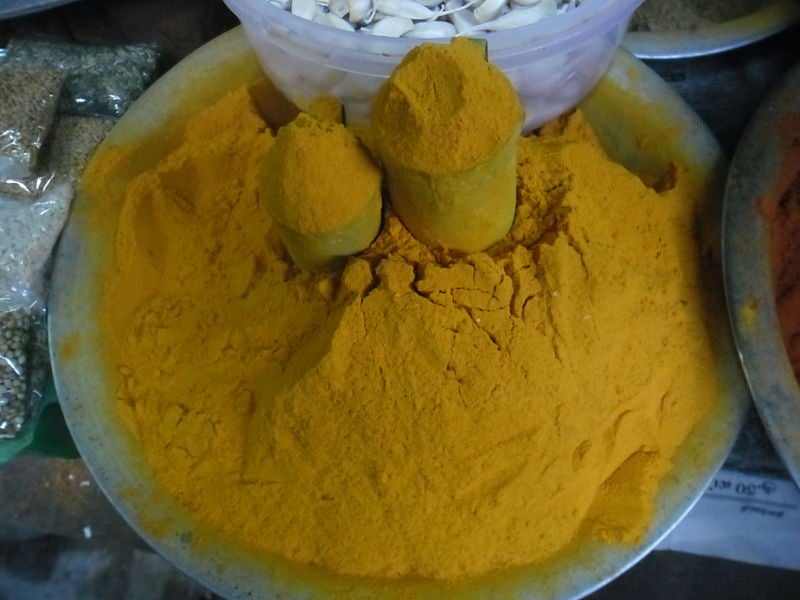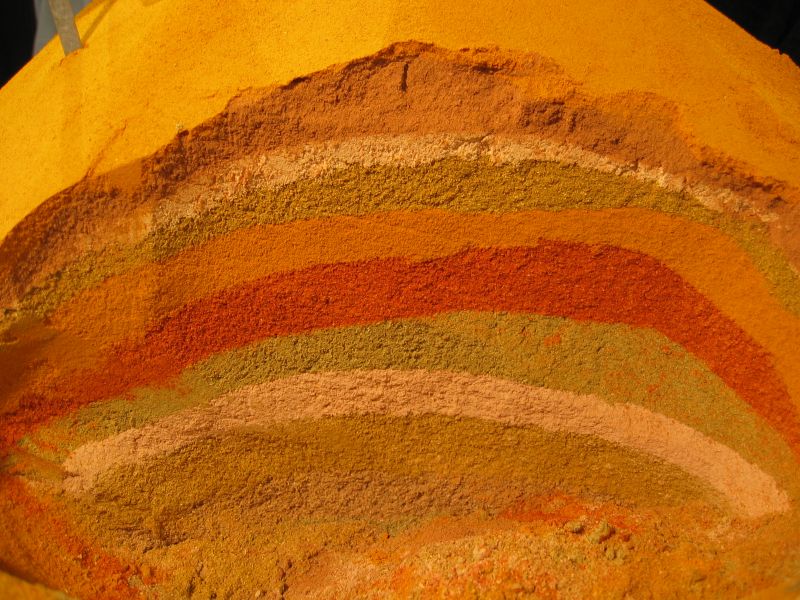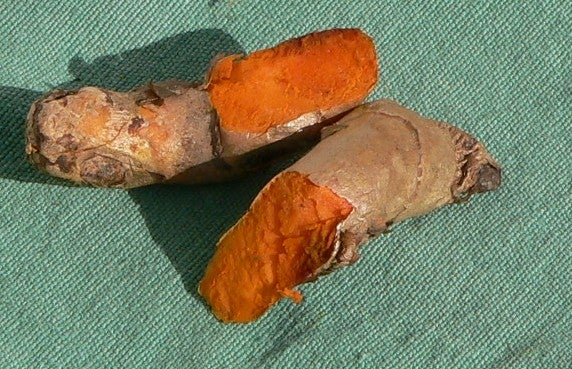
Turmeric is a spice widely used in India and Southeast Asia, where the plant is originally (although currently is cultivated in many warm, humid regions). Used since more than 4 thousand years ago in gastronomy and in medicine for various diseases. Learn more about the turmeric in the following article.
Medicinal properties of turmeric
- For stomach problems: as well as other pungent spices, turmeric is a good ally for some digestive disorders, since it stimulates the secretions and helps digestion. Gastritis, is recommended for people with dyspepsia, lack of appetite, slow digestion. This is due to its active ingredients, which help produce more pancreatic, and gastric juices to serve at the same time to balance the pH in these organs.
- To prevent flatulence: this is because turmeric is carminative, helping to remove gases that are hosted in the intestine. It is advisable to avoid cramps bowel and flatulence, also for stomach atony.

- To treat liver problems: turmeric is an excellent biliary tonic that protects the functions of the liver. This is Curcumin (a compound that gives it its characteristic orange-yellow colour). There are also other very good substances for this body, helps eliminate stones in the gallbladder, is anti-inflammatory, helps in liver drainage, it is effective to better digest the heavy meals. It is recommended in patients with cirrhosis, jaundice, liver disorders and gall-bladder.
- To treat some types of cancer: investigations show that turmeric contains ten compounds anticancer, serving for cases of breast, duodenum, skin and colon cancer. Helps to overcome the side effects that have this disease (such as chemotherapy) medicines and treatments.
- For rheumatoid arthritis and carpal tunnel syndrome: thanks to its anti-inflammatory properties, turmeric is an ally for patients suffering from rheumatism, arthritis and carpal tunnel (at the wrist, something very frequent today by excessive use of the keyboard).
- To eliminate depression: from thousands of years ago, this spice has been used by Chinese traditional medicine to cure and treat depression and other psychological or affective disorders. Turmeric has many stimulating components for the nervous system and also offers good effects on the immune system and mood. It serves to attenuate the consequences of stress also.

- To protect your heart: research has shown that eating turmeric helps in cardiovascular health. At the same time, it serves to reduce the cholesterol and the level of triglycerides in blood in a natural way. It prevents heart attacks.
- To increase immunity: this spice has the ability to increase the capacity for modulating immune of the body, thanks to several of its nutrients (such as zinc, copper, or polysaccharides). It is good for people with low defense due to stress, before an exam or important event.
- To treat respiratory problems: turmeric is used in Asia to treat bronchitis naturally, by its anti-inflammatory action. It is suitable for the treatment of COPD, due to its antioxidant properties.
- To protect the body from free radicals: this yellow spice helps us to eliminate the harmful effects caused by the so-called "radical free", extracting the body all negative and what us ill.
- For skin problems: used in powder, turmeric is very good for conditions such as fungus and athlete's foot, psoriasis.

How to use turmeric in food
The scientific name is curcuma longa, a perennial plant belonging to the family of ginger. It comes from a shrub of up to one meter high yellow and white flowers with green leaves. Given its deep color, is used as a colorant for foods, such as the rice. It is one of the main ingredients for sauces, stews and other dishes in Middle East, Southeast Asia and Middle East.It is known as a saffron, present in the food of China, Tibet, Indonesia and India. In the food industry today, it is called "E100", it serves as a colorant for butters, cheeses, mustards and milkshakes, always in very small proportions so its flavor is hardly distinguished. It is a component of curry powder, which gives it that strong yellow color.

For any preparation in a pot, the correct amount of turmeric is a dessert spoon and combines well with other spices such as pepper or cumin. You can use it for all the dishes with rice, pastas, soups, sauces, vegetables, salads, boiled vegetables, etc. It is also used for dishes with egg and fish and one of the most popular recipes is Curried Chicken or fish skewers.
It is an ideal replacement for Saffron because turmeric is less expensive but with a different flavor. With a spoonful of this spice and mayonnaise, you can make a delicious sauce (also with cream).
Contraindications of turmeric
It is necessary to consume turmeric in moderate amounts because its flavor is very penetrating and not everyone likes them, but in addition, because it can bring some side effects as a result. He is recommended to avoid their intake in women pregnant women and those who have serious problems in the gallbladder.

Hey Bud!
ReplyDeleteBeautiful share regarding turmeric!
Turmeric has great anti-inflammation and anti-oxidant properties. It is due to occurrence of curcumin in it. Curcumin is a polyphenol element. Since bio option of curcumin is inadequate, exterior source is the perfect way to understand this. It is good from health perspective.
It is a good anti septic chemical. When you have dried turmeric root, it could be rubbed with normal water in a hard surface to get turmeric essence for request of bruises and burns.
Turmeric was used frequently to assist in preventing contamination customarily. Turmeric is helpful while tackling various skin related issues, turmeric capsules for acne is the best acne cure medicine.
Regards
Ellen B Moss